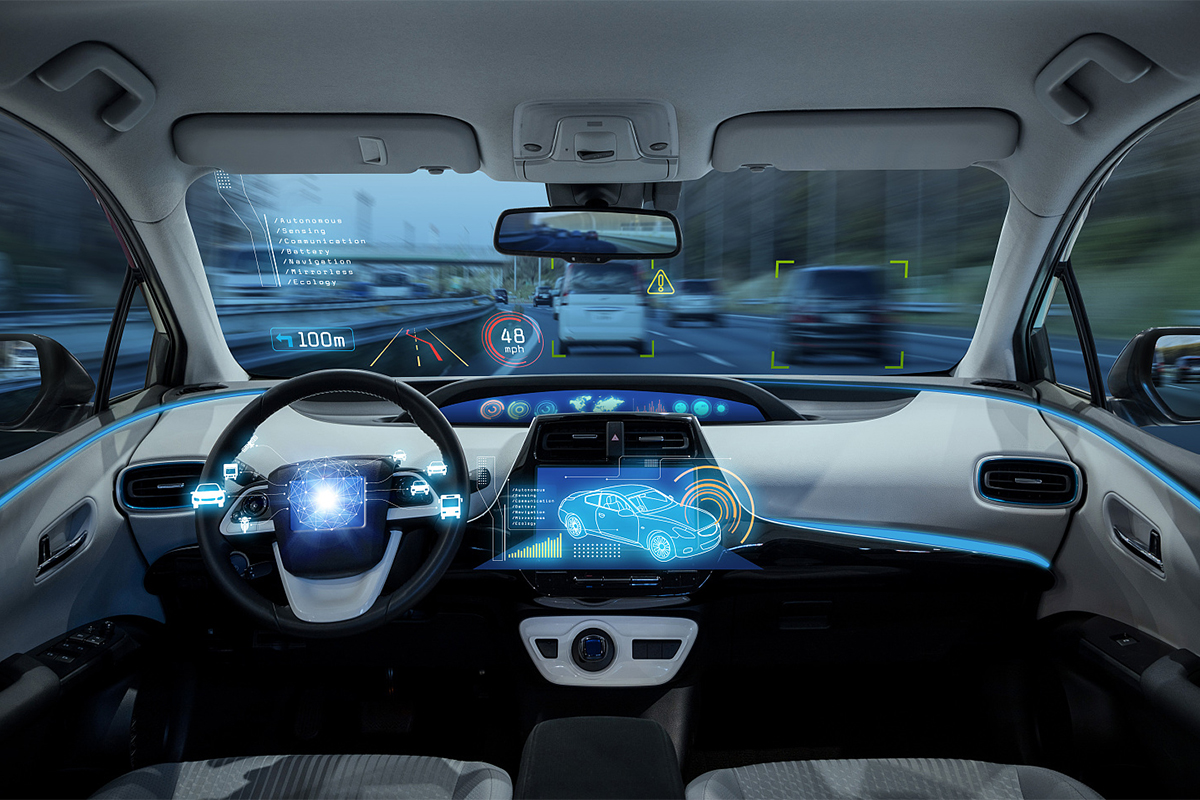Table of Contents Hide

Illuminating comfort and safety
Automotive interior lights are lighting fixtures and systems installed inside a vehicle's cabin to illuminate the interior spaces for various purposes. Interior lighting plays a crucial role in creating a comfortable, functional, and safe environment within the vehicle's cabin. It provides functional illumination for controls and instruments, and contributes to the overall aesthetics and ambiance of the vehicle's interior. The primary function of interior lighting is to illuminate the inside of the vehicle. This ensures that passengers can see and move comfortably during nighttime or in low-light conditions. Interior lights assist passengers when entering or exiting the vehicle, providing visibility for locating door handles, seat belts, and the interior environment. Interior lighting enhances overall safety by allowing occupants to see the interior space clearly. This is crucial for identifying potential hazards, ensuring that passengers can move safely within the vehicle. Ambient lighting enhances the interior atmosphere by providing subtle, decorative illumination. It often comes in various colors and intensity levels, allowing for customization to match the vehicle's design or the occupants' preferences. Some vehicles incorporate lighting elements for mood or entertainment purposes. These can include dynamic lighting effects, color-changing options, or synchronized lighting with in-car entertainment systems. Task lighting includes focused lights in specific areas such as the center console or storage compartments. It aids occupants in performing tasks like finding items or adjusting controls. Lighting is essential for illuminating gauges, controls, and switches on the instrument panel and center console. Proper illumination ensures that drivers can operate these controls safely during nighttime driving.Types of automotive interior lights
Various types of automotive interior lights are designed for specific applications and locations within the vehicle. Mounted on the ceiling of the vehicle, overhead lights typically include dome lights and map lights that illuminate the entire cabin or specific areas. Dome lights are centrally located interior lights that illuminate the entire cabin. They are typically mounted on the vehicle's ceiling and can be manually operated or activated by door switches. Map lights are designed to offer directed and adjustable light to make it easier for passengers, especially the driver or co-driver, to read maps, documents, or other materials without causing distraction to other occupants. Instrument panel lights are integrated into the dashboard or instrument cluster to illuminate gauges, controls, and indicators. Reading lights are dedicated fixtures that provide focused illumination for passengers to read maps, books, or electronic devices during travel. Footwell lights are positioned to illuminate the floor area around the front and rear seats. They contribute to a welcoming atmosphere and provide additional visibility for passengers. Vanity mirror lights are located in sun visors and provide focused illumination for occupants using mirrors for grooming or other personal activities. Located in various areas, such as door panels, footwells, or under seats, courtesy lights are activated when doors are opened, providing additional visibility for entering or exiting the vehicle. Trunk or cargo area lights ensure visibility when loading or unloading items in the trunk or cargo space. Lights integrated into the center console illuminates controls, storage compartments, and cup holders in the center console area. Warning lights and indicators illuminate to indicate specific conditions or issues, such as low fuel, engine warnings, or seat belt reminders.Embracing LED technology
The automotive industry has embraced LED technology for interior lighting. LED technology is known for its energy efficiency and low power consumption compared to traditional lighting technologies. LED lights have an exceptionally long lifespan compared to traditional bulbs. This longevity contributes to reduced maintenance costs and inconvenience. LED lights are inherently durable due their its solid-state design. They are resistant to vibrations and shocks, making them well-suited for the dynamic environment of a vehicle. LEDs are compact and can be arranged in various shapes and configurations. This flexibility allows automotive designers to create innovative and stylish lighting designs for the interior of vehicles. LEDs can be integrated into different parts of the car, providing both functional and aesthetic lighting. LEDs provide instant and full illumination as soon as they are powered on. This is in contrast to some traditional bulbs that may take a moment to reach full brightness. Instant illumination is crucial for interior lighting applications, providing immediate visibility and enhancing safety. LEDs offer a wide range of color options, allowing manufacturers to create different ambient lighting atmospheres within the vehicle. LED lights offer bright and clear illumination. This enhances safety by reducing the chances of missing important details or struggling to locate objects in low-light conditions. Color customization is a popular feature in modern cars, allowing drivers to personalize the interior lighting to match their preferences. LED lights can be easily dimmed to different levels of brightness. The excellent dimmability allows for customizable ambient lighting in the vehicle interior, providing a more comfortable and personalized experience for occupants. LED technology enables sophisticated control systems in vehicles. Automakers can implement smart lighting systems that offer dynamic lighting scenarios, responding to specific situations or enhancing the driving experience. LEDs can be easily integrated with advanced features such as dynamic lighting scenarios, animation effects, and interactive lighting systems. These features enhance the overall user experience and contribute to the modern and high-tech feel of the vehicle interior.Diversified forms
LED automotive interior lights come in various forms. LED bulbs are direct replacements for traditional incandescent or halogen bulbs used in various interior light fixtures such as dome lights, map lights, and vanity mirror lights. Automotive LED bulbs come in different base types to fit existing sockets, providing a simple and energy-efficient upgrade. LED modules are compact units containing multiple LEDs or an LED array. They are designed for specific applications in interior vehicle lighting. These applications include but are not limited to dome lights, map lights, reading lights, footwell lights, and other functional or decorative lighting elements inside the vehicle. Whether integrated into the dashboard, door panels, or other interior components, these modules contribute to the overall ambiance and aesthetics of the vehicle's interior. LED modules are designed for easy integration into the vehicle's interior. They may feature standardized connectors or mounting mechanisms that facilitate installation during the manufacturing process. The popularity of LED strips for automotive interior lighting is attributed to their flexibility, energy efficiency, customization options, ease of installation, durability, and the overall aesthetic enhancements they bring to a vehicle's interior. LED strips are flexible and can be easily bent or shaped to fit various contours within a vehicle's interior. This flexibility allows for creative and customized lighting setups. They can be easily installed in different areas of the vehicle's interior, including footwells, under seats, or along the dashboard. Integrated LED systems refer to complete lighting units that incorporate LEDs along with other components such as lenses, diffusers, and housing. These systems are designed to provide a specific type of illumination for applications like dome lights, reading lights, or ambient lighting. They often offer a cohesive design for seamless integration into the vehicle's interior.Design consideration
The design of LED lights for automotive interior lighting involves a holistic approach, considering factors such as form factor, LED type, color temperature, control features, power efficiency, thermal management, durability, ease of installation, integration with interior design, and compliance with safety standards. The form factor must seamlessly integrate with the specific features and layout of the vehicle's interior. Different LED types offer varying lumen outputs, thermal performance, color options, and energy efficiency. The arrangement and density of LEDs contribute to uniform light distribution. The design may include considerations for color temperature to achieve a specific lighting ambiance within the vehicle. Additionally, the color rendering index (CRI) is considered to ensure that the LED lights accurately represent the true colors of the interior. To ensure the longevity of the LED lights, automotive LED systems incorporate heat dissipation mechanisms. This may involve the use of heat sinks, thermal pads, or other techniques to dissipate heat generated during operation and maintain optimal operating temperatures. Automotive environments can subject LED lights to vibrations and shocks. LED lights for automotive interiors are designed and constructed in a way that enhances durability and resistance to vibrations, ensuring that the lights can withstand the conditions within a moving vehicle. LED lights for automotive interiors are designed to be easily installed. Depending on the form factor, the design may include features such as plug-and-play connectors, mounting brackets, or adhesive backing for straightforward installation.Driver circuitry
The driver circuitry in automotive LED lighting systems is a complex component that performs crucial functions such as power conversion, regulation, protection, and control. The primary function of the driver circuit is to convert the incoming DC (direct current) power from the vehicle's power supply (battery) into a voltage and current that align with the requirements of the LED packages. LED operation is sensitive to variations in current and voltage, and the LED driver ensures that the supplied power is suitable for optimal LED performance. The driver circuit includes protection circuitry to safeguard downstream components and the LEDs from abnormal operating conditions. This protection encompasses overvoltage, undervoltage, overcurrent, reverse polarity, short circuit, and overtemperature scenarios. It ensures the durability and reliability of the LED lighting system. In the context of automotive applications, where the battery voltage can vary considerably, the choice between switching power supply and linear power supply is crucial. A switching power supply is essential if the load voltage is higher than the supply voltage or if there is a wide variation in supply voltage. Switching regulation generates electromagnetic interference (EMI). Due to the generation of EMI by switching regulation, it is necessary to consider EMI filtering and screening when designing a DC-DC converter in automotive applications. Meeting stringent electromagnetic compatibility (EMC) requirements is crucial to prevent interference with other electronic systems in the vehicle. Switching regulation is known for higher efficiency but generates EMI, while linear regulation dissipates excess energy as heat. The choice between the two involves a trade-off between efficiency and simplicity. Linear regulation may be chosen when meeting tight EMI specifications is a priority, but it may suffer from lower efficiency. The driver circuit may also incorporate dimming control circuitry. This feature allows users to adjust the brightness of the LED light, providing flexibility in different lighting scenarios or preferences.Advanced features
LED automotive interior lights have evolved beyond traditional illumination, incorporating advanced features to enhance functionality, aesthetics, and user experience. The integration of these features aligns with the growing demand for advanced technologies in modern vehicles. Adaptive lighting systems in LED automotive interior lights involve dynamic adjustments to the brightness, color, or direction of the light based on various factors. For example, the system may automatically adjust the intensity of ambient lighting based on external lighting conditions or driver preferences. This enhances visibility and comfort for occupants. LED interior lights with color-changing capabilities allow users to switch between different colors or create dynamic color sequences. This feature is often used for ambient lighting, enabling occupants to set the mood inside the vehicle based on their preferences or driving conditions. LED interior lights can produce dynamic lighting patterns that go beyond static illumination. These patterns can include pulsating effects, gradual color changes, or animated sequences. Dynamic lighting adds a modern and sophisticated touch to the vehicle's interior, creating a visually engaging atmosphere. LED interior lights can contribute to creating different moods or themes within the vehicle. Whether it's a calming ambiance for relaxation or an energetic theme for an engaging driving experience, mood lighting adds a layer of personalization and comfort.Smart lighting controls enable users to customize and control the interior lighting environment. This can be achieved through smartphone apps, in-car touchscreens, or voice commands. Users may adjust the color, brightness, and timing of interior lights, allowing for a personalized and responsive lighting experience. Some advanced LED interior lighting systems incorporate proximity sensors and gesture controls. Proximity sensors detect the presence of occupants, adjusting lighting accordingly. Gesture controls allow users to interact with the lighting system through hand movements, providing a touchless and intuitive experience. LED interior lights can be integrated with other vehicle systems for enhanced functionality. For example, lights may respond to door openings, ignition events, or safety warnings. This integration creates a cohesive and synchronized lighting experience within the vehicle.











































